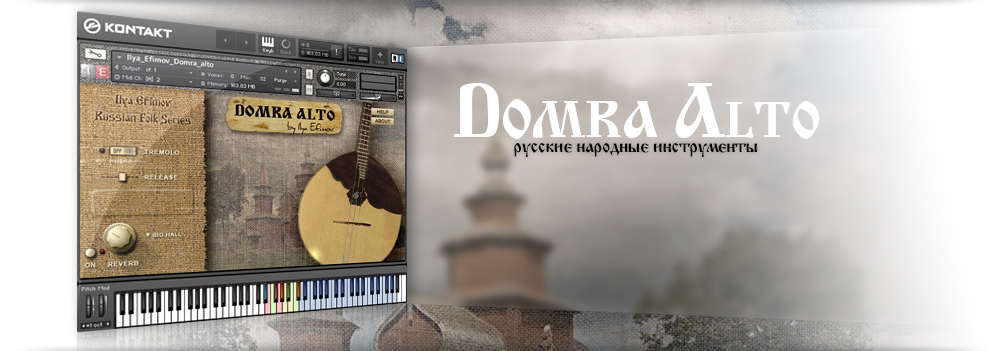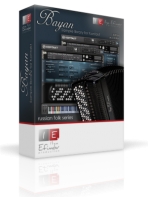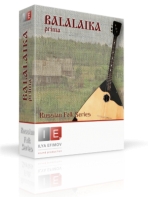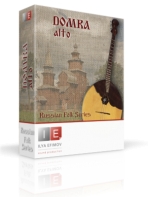 The Domra alto is Russian traditional instrument in the domra family. As with all domras, it has three strings but sounds an octave lower.
The Domra alto is Russian traditional instrument in the domra family. As with all domras, it has three strings but sounds an octave lower.
The strings are thicker, and the sound is softer, deeper and mellow. The domra-alto timbre can be divided into three parts: upper, middle and lower. In the upper register the instruments sounds brightly. And in the lower register the instrument is closer to bass, it's sound is deep and rich. But it is the middle register that makes the domra alto sound inimitably. It can be compared with deep feminine voice.
The domra alto matches perfectly with any instrument.
Pick down\up
This is default articulation. To perform pick notes, no keyswitches are necessary. Release sounds (the noise heard when a musician removes their finger, releasing the string from a held note) are triggered automatically after non-legato notes. Release sounds do not trigger when playing legato (overlapping) notes. Release sound volume is controlled by the slider on the user interface.
Repetition keys
A technique frequently used in virtuoso performances is a double pizzicato. Domra makes this possible using Repetition keys – F#2 and G2, which repeat the last note, interval or chord played. Repetition keys may also be used to “play” the last chord again, thus imitating a strumming articulation.
Glissando
To activate a glissando, press and hold down the C3 keyswitch, then play legato (overlapping) notes. The glissando articulation functions only within the range of the first string.
Legato
Legato on the domra is - like a guitar - a technique of playing overlapping notes with the left hand. If Legato is turned on and overlapping notes played, either hammer-on (up legato) or pull-off (down legato) articulations will be activated depending on the direction of the movement of the second note.
Vibrato
Vibrato on the domra is rarely used. This is due to the extremely high tension (11-
12 kg) of the strings, causing a rapid cessation of their vibrations. Therefore, we
used only the LFO vibrato. LFO vibrato is triggered by the ModWheel (CC1)g
Flageolet
Natural flageolets on the Domra can only be performed on a few frets. But Domra
makes artificial flageolets possible on any fret. Both natural and artificial have
been conveniently combined into one articulation. To enable the flageolet articulation,
press and hold G#2
Staccato
To activate staccato press and hold C#3
Tremolo
Tremolo is one of the most frequently used articulations
when playing the domra. To switch on the
tremolo articulation, press A2 once or the "tremolo"
button on the GUI. You do not need to hold the keyswitch.
To return to the pick articulation press B2 key or press tremolo buttonto turn off tremolo.
Tremolo dynamic
To change the dynamics (from pp to ff), use the Mod Wheel controller (CC1).
Velocity does not affect the dynamics of the sound.If you want to accent only the first note
in a tremolo,play with a high velocity value (117-127).
Tremolo speed
To change the speed of the tremolo use the MIDI controller CC2.
Tremolo glissando
A glissando (tremolo legato) can be triggered in two ways. Immediately before
playing “target” notes:
1. Press and hold down the sustain pedal (CC64)
2. Press and hold down the C3 keyswitch.
Glissando speed is linked with the general speed of the tremolo, and can be
controlled using the CC2 MIDI controller. The glissando articulation functions only
within the range of the first string.






 The Domra alto is Russian traditional instrument in the domra family. As with all domras, it has three strings but sounds an octave lower.
The Domra alto is Russian traditional instrument in the domra family. As with all domras, it has three strings but sounds an octave lower.





